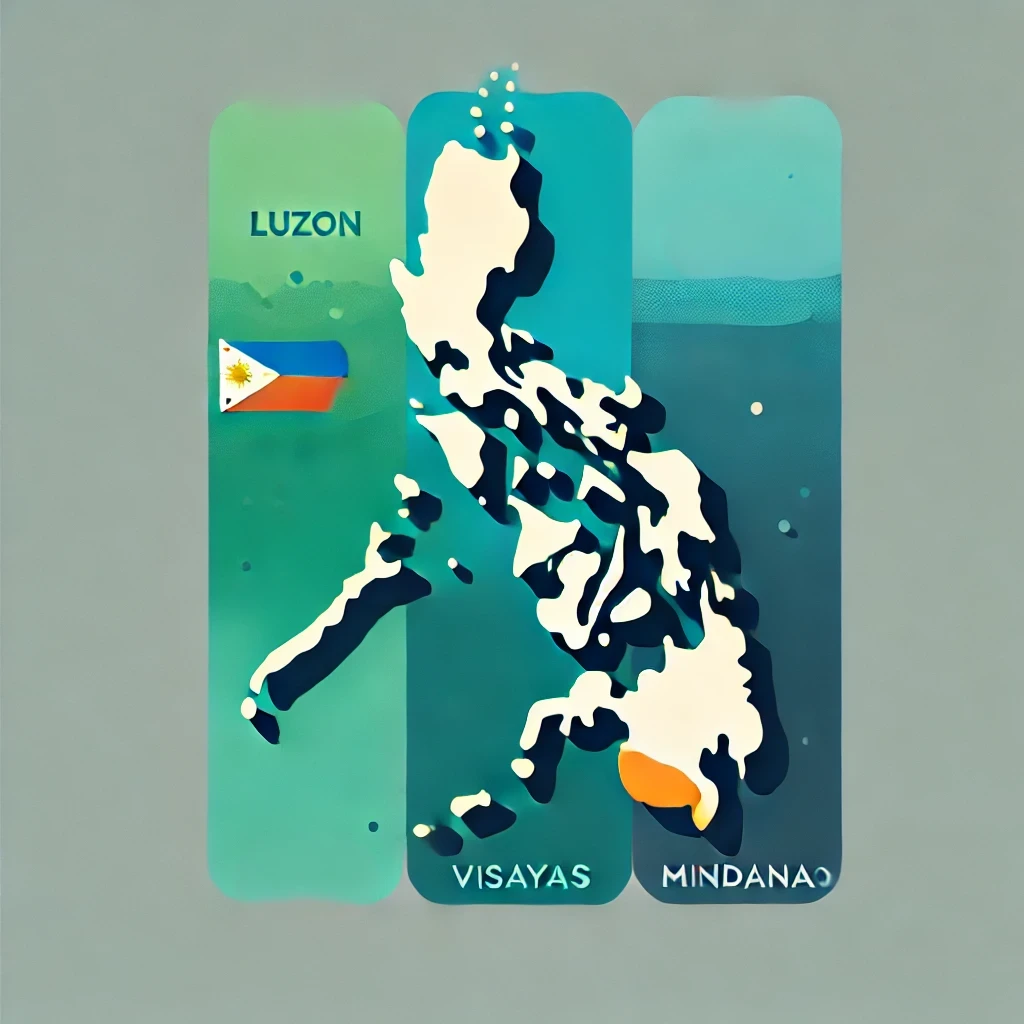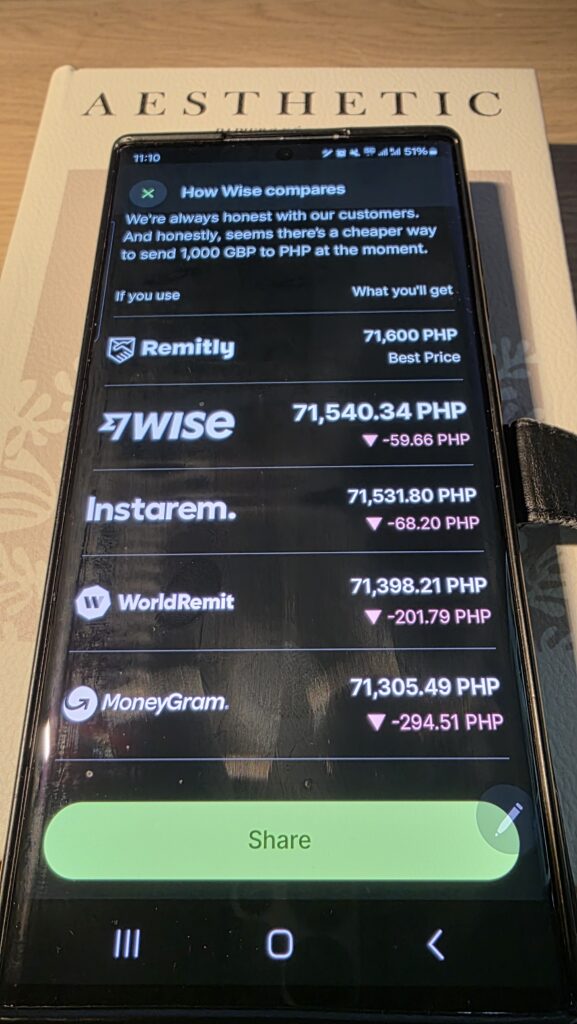The Philippines, an archipelagic nation in Southeast Asia, comprises over 7,600 islands. These islands are primarily categorized into three main groups: Luzon, Visayas, and Mindanao. Each region possesses unique geographical features, cultural heritage, and economic significance that contribute to the rich tapestry of Filipino identity. This comprehensive exploration will delve into the distinct characteristics of Luzon, Visayas, and Mindanao, examining their physical geography, demographics, economy, culture, and historical importance. By understanding these three main island groups, we can gain a deeper appreciation for the diversity and complexity of the Philippines as a whole.
Luzon: The Northern Powerhouse
Geography and Climate
Luzon, the largest and northernmost of the three main island groups, encompasses an area of approximately 109,965 square kilometers. This expansive landmass is characterized by a diverse topography, including mountain ranges, valleys, plains, and coastal areas. The Cordillera Central, a prominent mountain range in northern Luzon, is home to the country’s highest peak, Mount Pulag, standing at 2,922 meters above sea level. The Sierra Madre, another significant mountain range, runs along the eastern coast of Luzon, serving as a natural barrier against typhoons and contributing to the region’s varied climate.
Luzon experiences a tropical climate with distinct wet and dry seasons. The western regions typically receive more rainfall due to the southwest monsoon, while the eastern areas are influenced by the northeast monsoon. This climatic diversity supports a wide range of ecosystems, from lush rainforests to expansive agricultural lands, making Luzon a critical center for biodiversity and agricultural production.
Demographics and Urban Centers
As the most populous island group in the Philippines, Luzon is home to approximately 53% of the country’s total population. The region boasts several major urban centers, with Metro Manila serving as the national capital and the country’s political, economic, and cultural hub. Other significant cities in Luzon include Baguio, known for its cooler climate and as a popular tourist destination; Angeles, home to the Clark Freeport Zone; and Batangas, an important seaport and industrial center.
The table below provides an overview of the major urban centers in Luzon and their respective populations:
| City | Population (2020 estimate) | Notable Features |
|---|---|---|
| Metro Manila | 13,484,462 | National Capital Region, economic center |
| Baguio | 366,358 | Summer capital, educational hub |
| Angeles | 411,634 | Clark Freeport Zone, former US Air Force base |
| Batangas City | 346,970 | Major seaport, industrial center |
Economic Significance
Luzon serves as the economic powerhouse of the Philippines, contributing significantly to the country’s GDP. The island group’s diverse economy encompasses various sectors, including agriculture, manufacturing, services, and technology. Metro Manila, in particular, is the financial capital of the country, hosting the Philippine Stock Exchange and the headquarters of numerous multinational corporations.
Agriculture remains a crucial sector in Luzon, with the Central Luzon region often referred to as the “Rice Bowl of the Philippines” due to its extensive rice production. Other important agricultural products include coconuts, sugarcane, and various fruits and vegetables. The manufacturing sector in Luzon is well-developed, with industries ranging from electronics and automotive to food processing and textiles.
Cultural Heritage and Historical Significance
Luzon boasts a rich cultural heritage shaped by centuries of indigenous traditions, colonial influences, and modern developments. The region is home to numerous ethnic groups, each with their own distinct languages, customs, and artistic expressions. The Ilocanos in the northwest, the Tagalogs in the central plains, and the Bicolanos in the southeast are just a few examples of the diverse cultural landscape of Luzon.
Historically, Luzon has played a pivotal role in shaping the Philippines’ national identity. It was the site of significant events during the Spanish colonial period, the Philippine Revolution, and World War II. Important historical landmarks in Luzon include Intramuros, the walled city in Manila that served as the seat of Spanish colonial power; Corregidor Island, a strategically important fortress during World War II; and Biak-na-Bato, where the Philippine Revolution against Spain began.
Visayas: The Central Archipelago
Geography and Natural Resources
The Visayas, situated in the central part of the Philippine archipelago, consists of several major islands and numerous smaller ones. The three largest islands in this group are Panay, Negros, and Cebu. The Visayas region covers a total land area of approximately 61,077 square kilometers, characterized by a diverse landscape of mountains, plains, and coastal areas.
The region’s geography has resulted in the development of various natural resources. The Visayas is known for its rich marine biodiversity, making fishing a significant economic activity. The islands also possess fertile agricultural lands, supporting crops such as rice, corn, and sugarcane. Additionally, the region has substantial mineral deposits, including copper, gold, and silver, particularly in areas like Cebu and Leyte.
Climate and Environmental Challenges
Like Luzon, the Visayas experiences a tropical climate with wet and dry seasons. However, the region is more prone to typhoons due to its central location in the archipelago. This vulnerability to natural disasters has led to increased efforts in disaster preparedness and climate change adaptation strategies across the Visayan islands.
The Visayas faces several environmental challenges, including deforestation, coastal erosion, and marine pollution. Conservation efforts have been implemented to protect the region’s rich biodiversity, particularly in areas like the Visayan Sea, known for its diverse marine ecosystems.
Population Distribution and Urban Centers
The Visayas is home to approximately 20% of the Philippines’ total population. The region’s population is distributed across its major islands, with significant urban centers developing on each. The table below provides an overview of the largest cities in the Visayas and their populations:
| City | Island | Population (2020 estimate) | Notable Features |
|---|---|---|---|
| Cebu City | Cebu | 964,169 | Economic hub of the Visayas, major port |
| Iloilo City | Panay | 480,425 | Cultural center, education hub |
| Bacolod | Negros | 600,783 | “City of Smiles,” sugar industry capital |
| Tacloban | Leyte | 252,386 | Regional center, historically significant |
Economic Landscape
The Visayas plays a crucial role in the Philippine economy, with a diverse range of industries contributing to its economic output. Agriculture remains a significant sector, with sugar production being particularly important in Negros Occidental. The fishing industry is also vital, given the region’s extensive coastlines and rich marine resources.
Tourism has become an increasingly important economic driver in the Visayas. Popular destinations include Boracay Island, known for its pristine white sand beaches; Cebu, with its historical sites and vibrant urban culture; and Bohol, famous for its Chocolate Hills and tarsiers. The growth of the tourism sector has spurred development in related industries such as hospitality, transportation, and retail.
Cultural Diversity and Historical Importance
The Visayas is known for its rich cultural heritage, with each island group possessing distinct traditions, languages, and artistic expressions. The Cebuano, Hiligaynon, and Waray languages are widely spoken in different parts of the Visayas, alongside Filipino and English.
Historically, the Visayas has played a significant role in Philippine history. It was in Cebu where Ferdinand Magellan first landed in 1521, marking the beginning of Spanish colonization. The region was also a center of resistance during the Philippine Revolution and World War II.
The Visayas is renowned for its festivals, many of which blend indigenous traditions with Catholic influences. Notable celebrations include the Sinulog Festival in Cebu, the Dinagyang Festival in Iloilo, and the Maskara Festival in Bacolod. These events not only showcase the region’s cultural richness but also contribute significantly to local tourism and economies.
Mindanao: The Southern Frontier
Geographical Expanse and Natural Resources
Mindanao, the southernmost of the three main island groups, is the second-largest island in the Philippines, covering an area of approximately 97,530 square kilometers. The island group includes the main island of Mindanao and numerous smaller islands surrounding it. Mindanao’s landscape is characterized by rugged mountain ranges, expansive plains, and diverse coastal areas.
The region is rich in natural resources, including vast mineral deposits of gold, nickel, and copper. Mindanao is also known for its fertile agricultural lands, supporting the cultivation of various crops such as bananas, pineapples, and coconuts. The island’s extensive forests, although diminished due to logging activities, still contribute significantly to the country’s timber resources.
Climate and Ecological Significance
Mindanao experiences a tropical climate, but unlike Luzon and the Visayas, some areas in Mindanao have a more even distribution of rainfall throughout the year. This climate pattern supports a diverse range of ecosystems, including rainforests, wetlands, and coral reefs.
The island group is home to several important ecological sites, including Mount Apo, the highest peak in the Philippines, and Lake Lanao, one of the world’s ancient lakes. These areas not only hold immense biodiversity value but also play crucial roles in water resource management and climate regulation for the region.
Demographic Composition and Major Cities
Mindanao accounts for approximately 24% of the Philippines’ total population. The region is known for its cultural and religious diversity, with significant Muslim and indigenous populations alongside the Christian majority. This diversity is reflected in the various languages spoken across the island, including Cebuano, Hiligaynon, and Maguindanao.
The table below outlines the major cities in Mindanao and their populations:
| City | Population (2020 estimate) | Notable Features |
|---|---|---|
| Davao City | 1,776,949 | Largest city in Mindanao, economic center |
| Cagayan de Oro | 728,402 | “City of Golden Friendship,” education hub |
| Zamboanga City | 937,254 | “Asia’s Latin City,” major port |
| General Santos | 697,315 | “Tuna Capital of the Philippines” |
Economic Dynamics and Development
Mindanao’s economy is primarily driven by agriculture, with the region often referred to as the “Food Basket of the Philippines.” The island group is a major producer of export crops such as bananas, pineapples, and palm oil. The agricultural sector is supported by vast plantations and smallholder farms across the region.
The mining industry also plays a significant role in Mindanao’s economy, with several large-scale mining operations extracting gold, copper, and nickel. However, this sector has faced challenges related to environmental concerns and conflicts with indigenous communities.
In recent years, efforts have been made to diversify Mindanao’s economy and attract investments in manufacturing and services. Cities like Davao and Cagayan de Oro have seen growth in their IT and BPO sectors, while also developing as regional trading and logistics hubs.
Cultural Tapestry and Historical Context
Mindanao boasts a rich and complex cultural landscape, shaped by its indigenous peoples, Islamic influences, and later Christian settlements. The island group is home to numerous indigenous groups, collectively known as Lumad, each with their own distinct traditions and languages.
The presence of a significant Muslim population, particularly in the Bangsamoro Autonomous Region in Muslim Mindanao (BARMM), adds another layer to Mindanao’s cultural diversity. Islamic traditions and practices have deeply influenced the art, music, and social structures in many parts of Mindanao.
Historically, Mindanao has had a different trajectory compared to Luzon and the Visayas. The region maintained a degree of independence during the Spanish colonial period, with Islamic sultanates exerting significant influence. This unique historical context has contributed to ongoing discussions about autonomy and development in the region.
Comparative Analysis of the Three Island Groups
To better understand the similarities and differences between Luzon, Visayas, and Mindanao, let’s examine some key metrics in a comparative table:
| Metric | Luzon | Visayas | Mindanao |
|---|---|---|---|
| Land Area (km²) | 109,965 | 61,077 | 97,530 |
| Population (% of PH total) | 53% | 20% | 24% |
| Major Economic Sectors | Services, Manufacturing, Agriculture | Tourism, Agriculture, Services | Agriculture, Mining, Services |
| Key Natural Resources | Rice, minerals | Marine resources, agricultural land | Minerals, timber, agricultural land |
| Primary Languages | Tagalog, Ilocano, Bicolano | Cebuano, Hiligaynon, Waray | Cebuano, Hiligaynon, Maguindanao |
| Major Environmental Challenges | Urban pollution, deforestation | Coastal erosion, marine pollution | Deforestation, mining-related issues |
This comparative analysis highlights the unique characteristics of each island group while also demonstrating their interconnectedness within the larger Philippine context. Each region contributes distinctively to the nation’s economy, cultural heritage, and biodiversity, underscoring the importance of balanced development and conservation efforts across all three island groups.
Economic Contributions and Challenges
Luzon’s Economic Dominance
Luzon, particularly Metro Manila, dominates the Philippine economy, contributing over 70% to the national GDP. This economic concentration has led to rapid urbanization and development in the region. However, it has also resulted in challenges such as income inequality, urban congestion, and environmental degradation.
The service sector, including finance, real estate, and business process outsourcing (BPO), has been the primary driver of Luzon’s economic growth. The manufacturing sector, concentrated in industrial zones around Metro Manila and nearby provinces, also plays a significant role.
Visayas’ Emerging Economy
The Visayas has been experiencing steady economic growth, driven by tourism, agriculture, and emerging industries. Cities like Cebu have become important economic hubs, attracting investments in IT, BPO, and real estate sectors.
Tourism remains a key economic driver in the Visayas, with destinations like Boracay, Cebu, and Bohol attracting millions of visitors annually. However, the sector faces challenges related to sustainability and environmental conservation.
Mindanao’s Potential and Challenges
Mindanao’s economy, while rich in natural resources and agricultural potential, has faced challenges related to security concerns and uneven development. The region’s vast agricultural lands produce a significant portion of the country’s export crops, but there is a need for increased value addition and industrialization.
The establishment of the Bangsamoro Autonomous Region in Muslim Mindanao (BARMM) presents new opportunities for economic development and peace-building in the region. Efforts are being made to attract investments and promote inclusive growth across Mindanao.
Environmental Conservation and Sustainable Development
All three island groups face significant environmental challenges, including deforestation, biodiversity loss, and climate change impacts. Conservation efforts and sustainable development initiatives are crucial for preserving the Philippines’ natural heritage and ensuring long-term economic viability.
Some key environmental initiatives across the island groups include:
- Reforestation projects in the Sierra Madre mountain range in Luzon
- Marine protected areas in the Visayan Sea
- Sustainable agriculture practices in Mindanao’s plantations
These efforts highlight the importance of balancing economic development with environmental conservation across all three island groups.
Future Prospects and Development Strategies
The future development of Luzon, Visayas, and Mindanao will require tailored strategies that address the unique challenges and opportunities of each region. Some key areas of focus include:
- Decentralization of economic activities from Metro Manila to other regions in Luzon and beyond
- Sustainable tourism development in the Visayas, focusing on environmental conservation and community involvement
- Promotion of peace, security, and inclusive development in Mindanao, leveraging its agricultural and mineral resources
Additionally, investing in infrastructure, education, and technology across all three island groups will be crucial for ensuring balanced and sustainable development throughout the Philippines.
Conclusion
The Philippines’ three main island groups – Luzon, Visayas, and Mindanao – form a diverse and complex nation, each contributing uniquely to the country’s geography, economy, culture, and history. Luzon, as the northern powerhouse, serves as the political and economic center, driving much of the country’s development. The Visayas, with its central archipelagic nature, plays a crucial role in marine resources, tourism, and cultural preservation. Mindanao, the southern frontier, offers vast agricultural potential and natural resources, while also presenting unique challenges and opportunities for inclusive development.
Understanding these three main island groups is essential for comprehending the Philippines as a whole. Their distinct characteristics, combined with their shared national identity, create a rich tapestry that defines the Philippine archipelago. As the country continues to develop and face global challenges, the strengths and resources of each island group will play pivotal roles in shaping the nation’s future.
By appreciating the diversity and interconnectedness of Luzon, Visayas, and Mindanao, we can better address the unique needs and potentials of each region while working towards a more cohesive and prosperous Philippines. The continued balanced development and conservation of these island groups will be crucial in ensuring a sustainable and equitable future for all Filipinos.
As the Philippines moves forward, it faces both challenges and opportunities across its three main island groups. Climate change adaptation, sustainable resource management, and equitable economic growth are key issues that will require coordinated efforts across Luzon, Visayas, and Mindanao. By leveraging the strengths of each region – Luzon’s economic power and innovation, Visayas’ cultural richness and tourism potential, and Mindanao’s agricultural abundance and diversity – the Philippines can build a more resilient and inclusive nation.
Furthermore, fostering greater inter-island connectivity, both in terms of physical infrastructure and cultural exchange, will be vital for national unity and development. This includes improving transportation networks, enhancing digital connectivity, and promoting cultural understanding among the diverse populations of the three island groups.
In conclusion, the Philippines’ three main island groups – Luzon, Visayas, and Mindanao – each play an indispensable role in shaping the nation’s identity, economy, and future. Their unique characteristics and shared challenges underscore the importance of a holistic approach to national development that recognizes and respects regional differences while working towards common goals. As the Philippines continues to evolve and adapt to global changes, the synergy between these island groups will be key to realizing the country’s full potential on the world stage.
Disclaimer: This article aims to provide a general overview of the three main island groups of the Philippines based on available information as of April 2024. While efforts have been made to ensure accuracy, some details may have changed since the time of writing. Readers are encouraged to consult more recent and specialized sources for up-to-date information on specific topics. If you notice any inaccuracies, please report them so we can correct them promptly.




